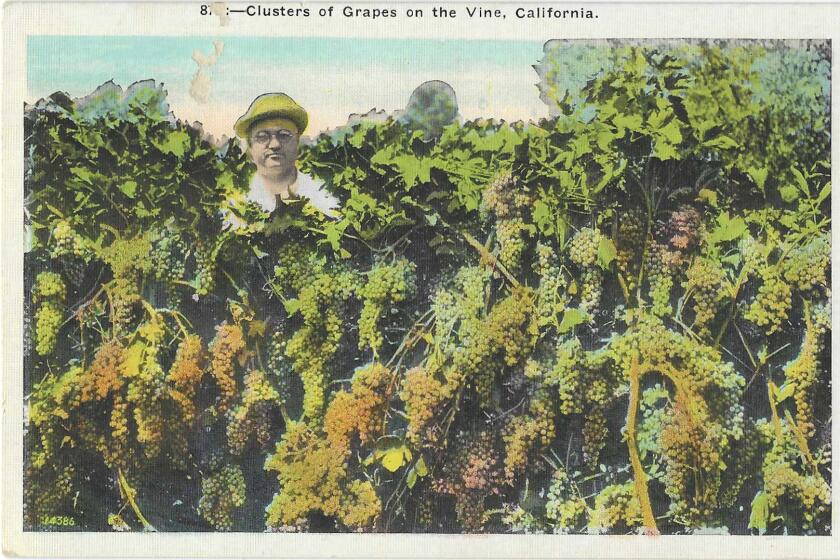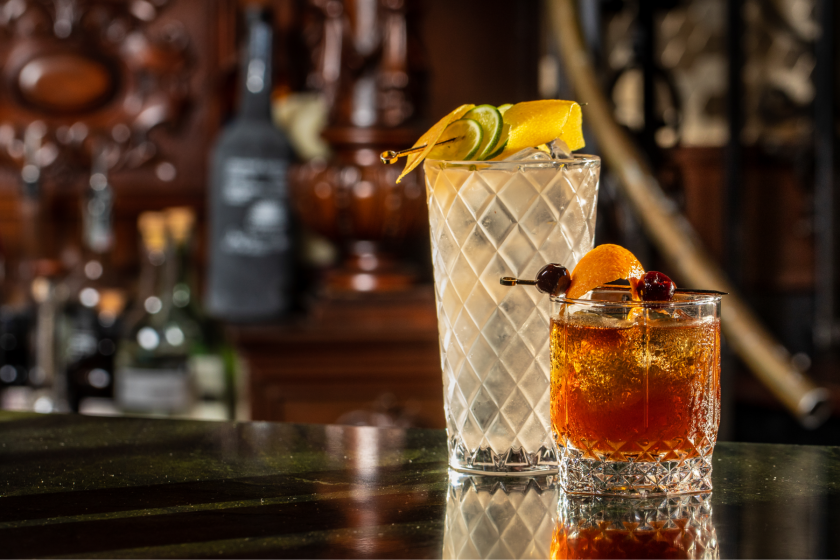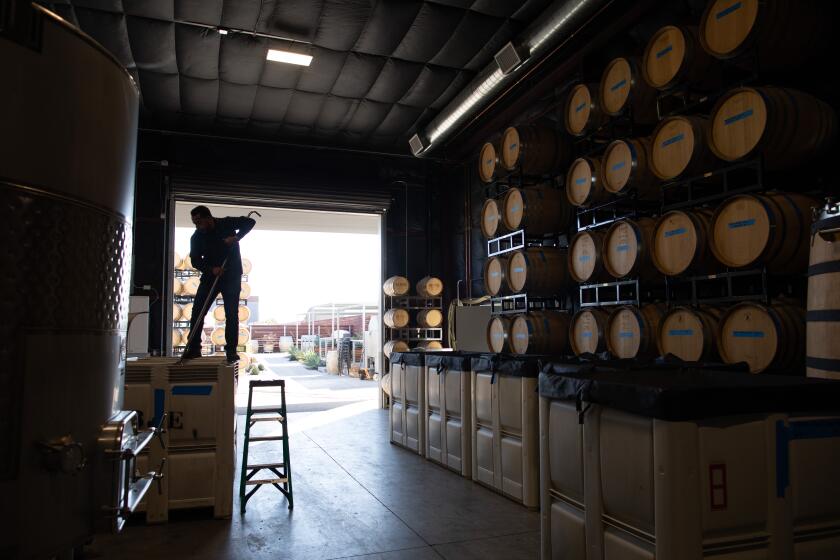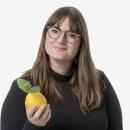What you can learn about wine by watching new manga-based TV series ‘Drops of God’
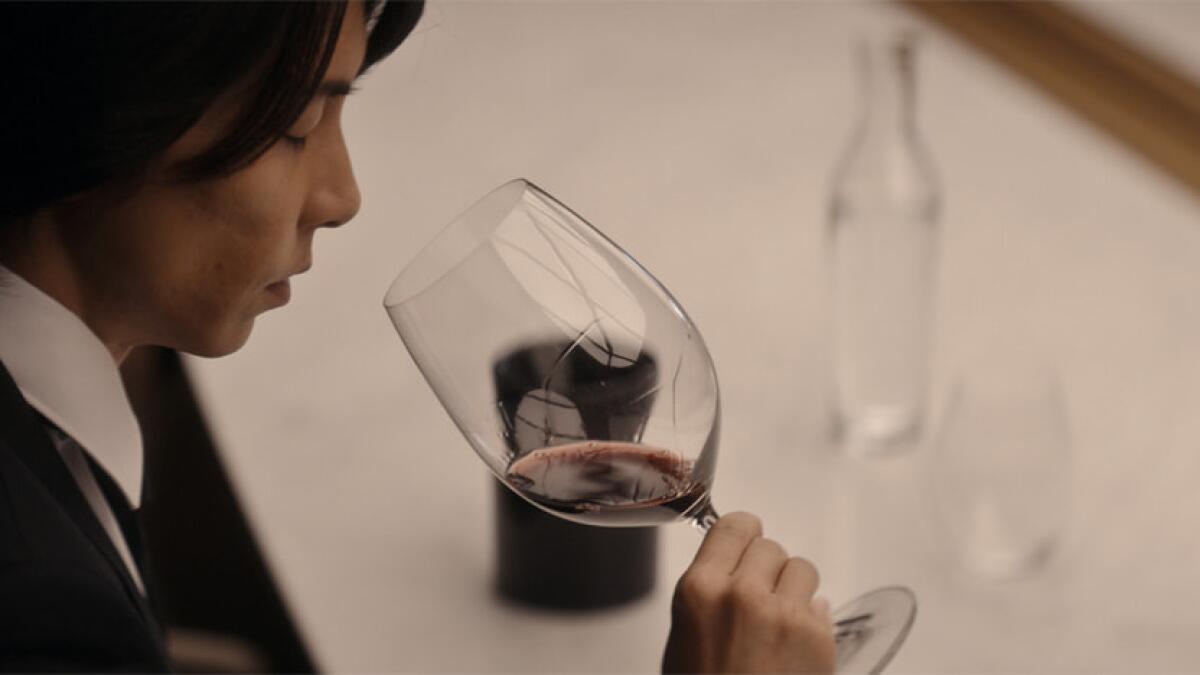
- Share via
The average TV viewer might not know much about the world of high-end wine, but the creators behind new series “Drops of God” hope to change that in only eight episodes.
Shot across Japan, France and Italy, the limited series now streaming on Apple TV+ is a trilingual drama cloaked in family intrigue, with wine-industry knowledge — how to sip, smell and begin to identify wine — divulged between scenes of love, trauma, mystery and tension. Its two protagonists must complete cryptic challenges for an inheritance that includes a wine collection worth nearly $150 million.
The show is loosely based on the bestselling manga series by siblings Yuko and Shin Kibayashi (published under the pen name Tadashi Agi), which provided readers across the globe with an extensive wine education via more than 40 volumes published over a decade. With far less time and a separate medium, the TV series’ team needed to condense that for viewers who have only one season with the characters — while still appealing to the millions of fans of the manga.
“There are three categories of people who are going to watch the show,” said series creator Quoc Dang Tran (“Call My Agent,” “Marianne,” “Parallel”). “The people who don’t know much about wine but are intrigued by it; the people who love the manga; and the connoisseurs, the oenophiles — and the two last categories are the guardians of the temple.”
Fans of the manga were ravenous not only for each installment but its wines; as volumes flew off the shelves — more than 3.5 million copies have been sold — so did bottles mentioned in the series, drastically altering availability and retail pricing for certain vintages. Its popularity can be partly credited to its approachability: “Drops of God” provided a new window into the world and vocabulary of wine. In his Apple TV+ series, Dang Tran hoped to replicate that accessibility — and further it with new character development.
Next time you raise a glass of California wine, remember the time when Los Angeles, not Northern California, was the state’s major wine region.
Appellation, sulfites, bouquet, domaine, tannins, vintage, negociants, aeration — even the basic vocabulary of wine can be daunting to the casually curious. While the manga helped educate millions of readers and dispelled some preconceptions, Dang Tran realized that most viewers were more likely to be drawn to the plot and the contest at the outset. “An adaptation is walking in a landmine, that’s for sure,” he said. “I know that.”
In his series, the drama unfolds around the inheritance left by one of the world’s most prolific wine authorities. His estranged daughter, Camille Léger (Fleur Geffrier), must compete against the wine titan’s protege, Issei Tomine (Tomohisa Yamashita), for a home in Japan and one of the world’s most comprehensive wine collections. Camille Léger — in the show a French woman but in the manga a Japanese man — is a novice who must overcome her sometimes violent aversion to wine caused, in part, by intense childhood scent memory and training with her now-late father, Alexandre Léger, while Issei Tomine proves methodical, encyclopedic, shrewd and unflinching, with the clear advantage of years of study.
Camille’s talent, however, is innate, and as the series follows her immersion into wine and both protagonists sip, swirl and spit, viewers learn alongside them: how to taste wine, how it’s made, what’s at the heart of it. In Episode 2, possibly the most wine-technique-heavy as Camille begins her training as an adult, viewers learn to place a glass of wine over a white surface, like a napkin or tablecloth, to better study the color, which will help to determine a wine’s age or indicate how delicate or bold its flavor. As she learns to smell, let the wine breathe and then smell again to let new aromas surprise her, so do viewers. Through one of Léger’s challenges it’s revealed that with oxidation, new aromas such as truffle can appear.
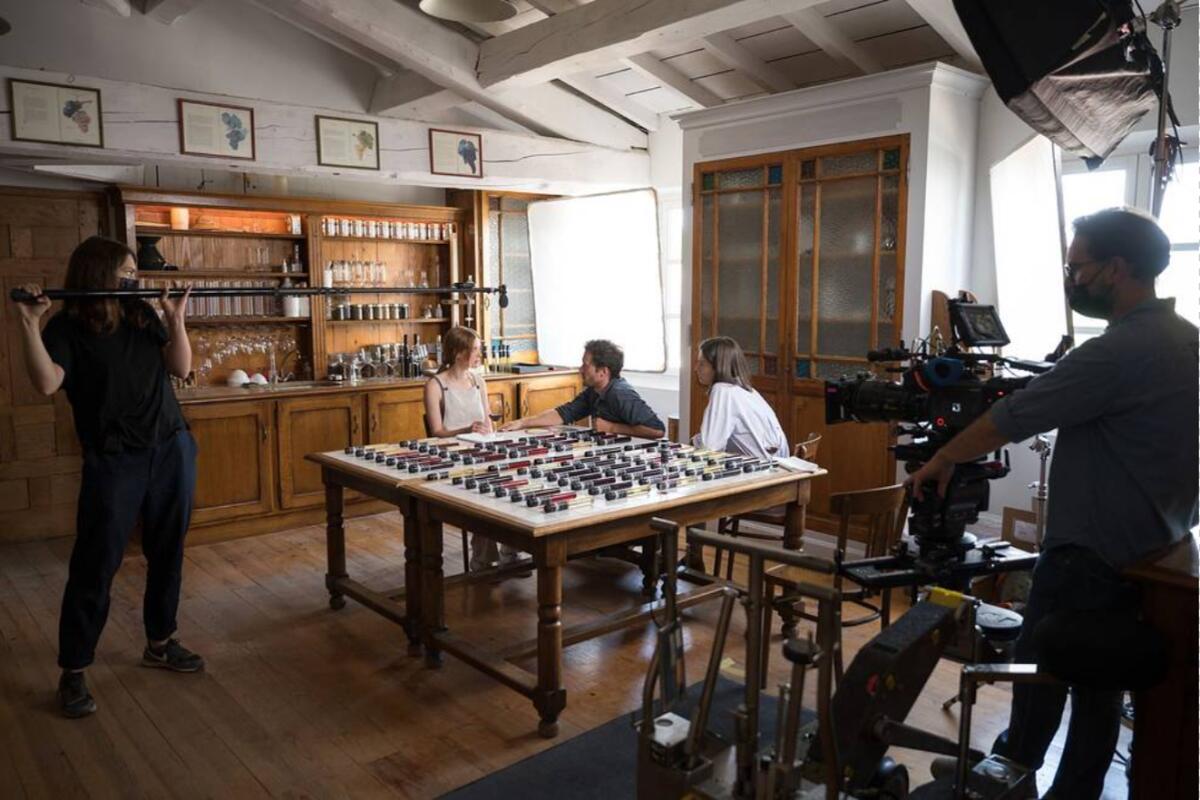
Dang Tran began production with the benefit of a bit of wine knowledge simply by being French, he jokes, though he would need much more to bring the Kibayashis’ manga to life. “I thought, ‘OK, if I am Camille and she knows nothing about wine, where would I start?’” he said. “My journey is her journey, or her journey is my journey. It was very demanding, but that’s the beauty of this work.” He began reading tomes by American and French authors, including popular illustrated reference book “Le Vin C’est Pas Sorcier” by Ophélie Neiman and the comprehensive “Le Grand Larousse du Vin” by Isabelle Jeuge-Maynart. He knew he’d be appealing to a broad audience whose base knowledge could vary as much as a vintage from one year to the next.
Feeling thirsty? Here are the 10 best places around Los Angeles for drinks.
To fit dozens of volumes of text into a miniseries, Dang Tran had to pare down the 12 wines that needed to be identified in the manga to only three. “If you’ve read only one volume of the manga, you still know how dense and how didactic it was — which are two great qualities for manga but not so much for a TV show,” he said.
Dang Tran designed the challenges, then found the wines that exemplified the characteristics — such as aromas or backstories — that fit. To find these wines for the script, oenophilic needles in a global haystack, he turned to the series’ consulting sommelier, Sébastien Pradal.
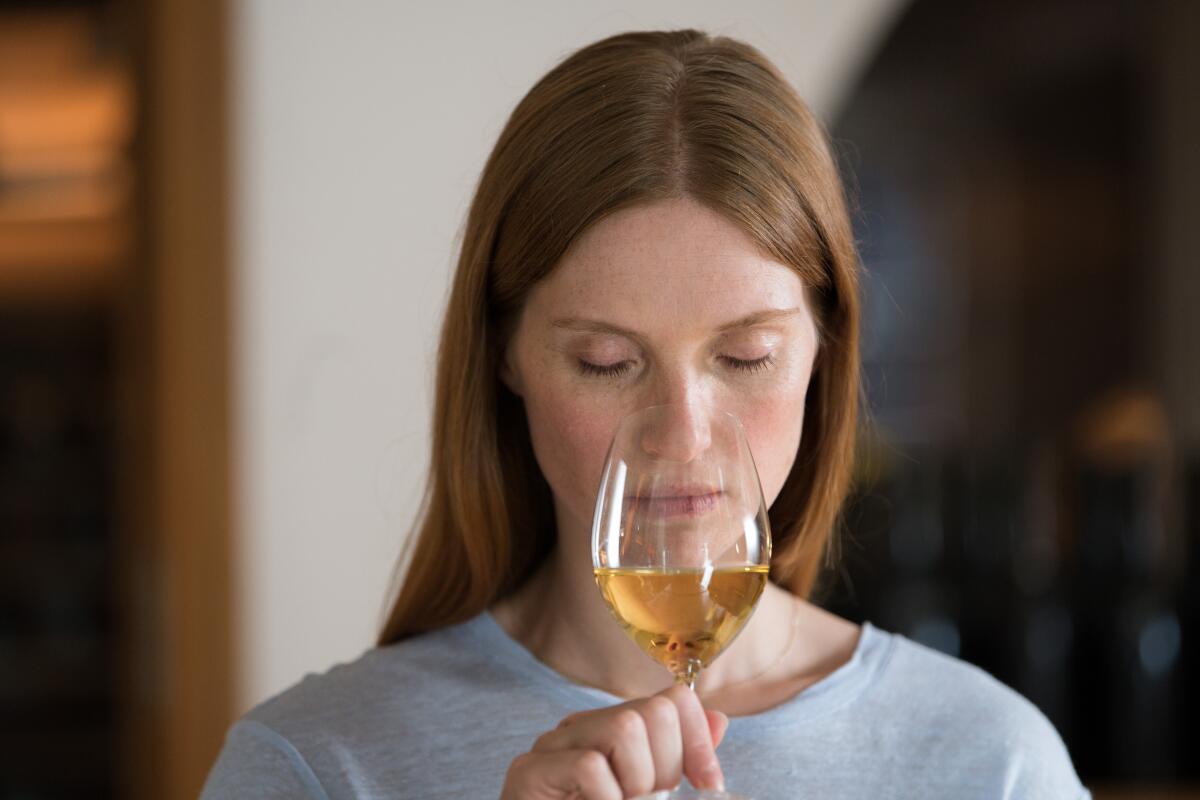
The sommelier with nearly 30 years in food and wine became not only a sounding board but a tasting coach for the actors and a production connection to real-life vintners. Beyond the show, he owns restaurant La Petite Régalade, as well as vineyards in the South of France where he partners with longtime winemaker Olivier Julien. It was at his restaurant in central Paris that he held trainings for both Geffrier and Yamashita, working primarily with the show’s Camille in France while Issei trained with another expert in Tokyo. Pradal focused on how to taste wine, how to smell wine, how to look like a professional when you do it and how to identify clues through the nose, then the mouth.
The training was a bit easier for Geffrier, who was raised with familiarity of the restaurant industry through her chef father. Her knowledge was a beginner’s but now, Pradal jokes, she’ll be better than him in a few years. He said the same can be said for Yamashita; when they first met, the sommelier was struck by how similar the actor appeared to his character in the show — direct, controlled, observant — but when they met again months later, his wine knowledge had evolved to the point Pradal said it felt as though he were sitting down with the character Issei Tomine in the flesh.
Pradal also helped develop a swirling style for both characters: Issei cold and methodical, like a robot, Camille rougher and full of energy, more novice-like and less controlled at the beginning, but their forms evolve as the characters do. Pradal didn’t want to read the manga first, lest it influence the wines he chose or the way it’s spoken about in the series. When it came to picking the wines, of course he sneaked in some of his favorites: In the series’ developing stages, as it became a more international show, Pradal began sourcing far beyond France, pulling from Tokyo, Australia, America and other countries. Some of the exact language he uses to describe aroma and taste wound up as dialogue for the characters.
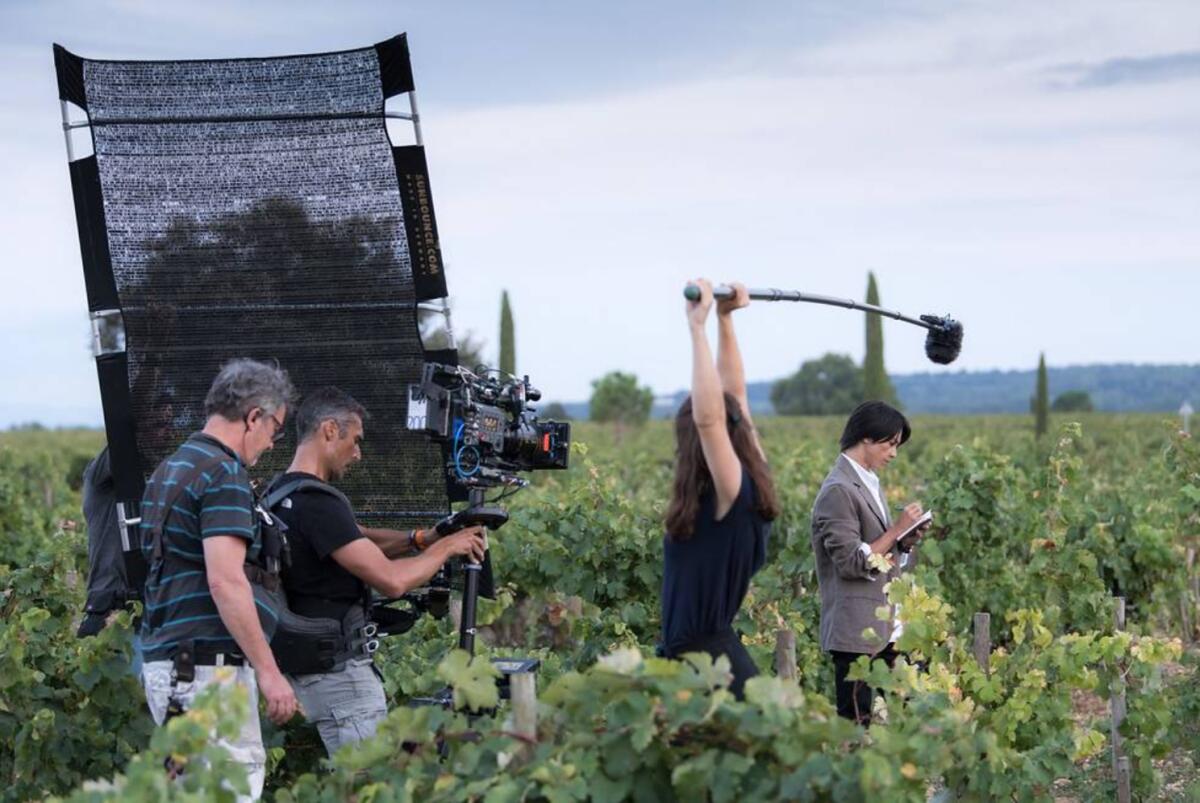
While the verbiage, the comfort in gestures and establishing the inner workings of the wine industry were crucial to building a believable world, most important to Pradal was conveying the people behind the bottles: the vintners, the farmers, the families who care for the vines, sometimes for multiple generations.
“I wanted in fact to show the way the wine is made, the people who are making the wine — it’s agriculture,” he said. “It’s a real job, the real world.”
Episode 6 takes a few of its characters to Italy, hunting for clues seen in a painting during the second challenge; it’s here biodynamic wine is introduced to the plot in a father-and-daughter operation, an important note for both Dang Tran and Pradal to underscore the importance of smaller, family-run businesses and more old-world practices in the field.
The stories of Latinos in the wine industry were often relegated to those who prune or graft the vines or work in the cellars. But that’s changing as Latino vintners grow in number and influence.
As is oft repeated by both the show’s characters and its team, wine creates stories, heritage and memory — and a bottle that costs a month’s salary drunk alone is worth far less without the ties formed by sharing it.
“When you discover this world of wine, you understand how much it’s about tradition: It’s about good values, it’s about the sky, the earth and humans. It’s all about nature, really. So we can talk about $20,000 bottles of wine, but it’s not about that,” Dang Tran said. “ At the end of the day, it’s all about sharing conviviality. There’s no point in buying the most expensive bottle of wine in the world and drinking it by yourself in your living room.”
‘Drops of God ’
Where: Apple TV+
When: Anytime; new episodes on Fridays
Rating: TV-MA (may be unsuitable for children under the age of 17)
More to Read
Eat your way across L.A.
Get our weekly Tasting Notes newsletter for reviews, news and more.
You may occasionally receive promotional content from the Los Angeles Times.
